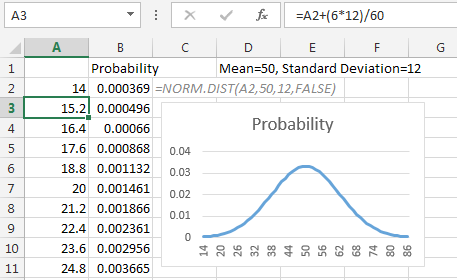

Law of Large Numbers: As you increase sample size (or the number of samples), then the sample mean will approach the population mean.The central limit theorem shows the following: A sampling distribution of the mean is the distribution of the means of these different samples. In research, to get a good idea of a population mean, ideally you’d collect data from multiple random samples within the population. The central limit theorem is the basis for how normal distributions work in statistics. Once you identify the distribution of your variable, you can apply appropriate statistical tests. If data from small samples do not closely follow this pattern, then other distributions like the t-distribution may be more appropriate. The empirical rule is a quick way to get an overview of your data and check for any outliers or extreme values that don’t follow this pattern. Around 99.7% of scores are between 7, 3 standard deviations above and below the mean.Around 95% of scores are between 8, 2 standard deviations above and below the mean.Around 68% of scores are between 10, 1 standard deviation above and below the mean.The data follows a normal distribution with a mean score ( M) of 1150 and a standard deviation ( SD) of 150. Around 99.7% of values are within 3 standard deviations from the mean.Įxample: Using the empirical rule in a normal distributionYou collect SAT scores from students in a new test preparation course.
 Around 95% of values are within 2 standard deviations from the mean. Around 68% of values are within 1 standard deviation from the mean. The empirical rule, or the 68-95-99.7 rule, tells you where most of your values lie in a normal distribution: A small standard deviation results in a narrow curve, while a large standard deviation leads to a wide curve. The standard deviation stretches or squeezes the curve. Increasing the mean moves the curve right, while decreasing it moves the curve left. The mean determines where the peak of the curve is centered. The mean is the location parameter while the standard deviation is the scale parameter. The distribution can be described by two values: the mean and the standard deviation. The distribution is symmetric about the mean-half the values fall below the mean and half above the mean. The mean, median and mode are exactly the same. Normal distributions have key characteristics that are easy to spot in graphs: What are the properties of normal distributions? Understanding the properties of normal distributions means you can use inferential statistics to compare different groups and make estimates about populations using samples. Height, birth weight, reading ability, job satisfaction, or SAT scores are just a few examples of such variables.īecause normally distributed variables are so common, many statistical tests are designed for normally distributed populations. Frequently asked questions about normal distributionsĪll kinds of variables in natural and social sciences are normally or approximately normally distributed. What is the standard normal distribution?.
Around 95% of values are within 2 standard deviations from the mean. Around 68% of values are within 1 standard deviation from the mean. The empirical rule, or the 68-95-99.7 rule, tells you where most of your values lie in a normal distribution: A small standard deviation results in a narrow curve, while a large standard deviation leads to a wide curve. The standard deviation stretches or squeezes the curve. Increasing the mean moves the curve right, while decreasing it moves the curve left. The mean determines where the peak of the curve is centered. The mean is the location parameter while the standard deviation is the scale parameter. The distribution can be described by two values: the mean and the standard deviation. The distribution is symmetric about the mean-half the values fall below the mean and half above the mean. The mean, median and mode are exactly the same. Normal distributions have key characteristics that are easy to spot in graphs: What are the properties of normal distributions? Understanding the properties of normal distributions means you can use inferential statistics to compare different groups and make estimates about populations using samples. Height, birth weight, reading ability, job satisfaction, or SAT scores are just a few examples of such variables.īecause normally distributed variables are so common, many statistical tests are designed for normally distributed populations. Frequently asked questions about normal distributionsĪll kinds of variables in natural and social sciences are normally or approximately normally distributed. What is the standard normal distribution?. 
What are the properties of normal distributions?.







 0 kommentar(er)
0 kommentar(er)
